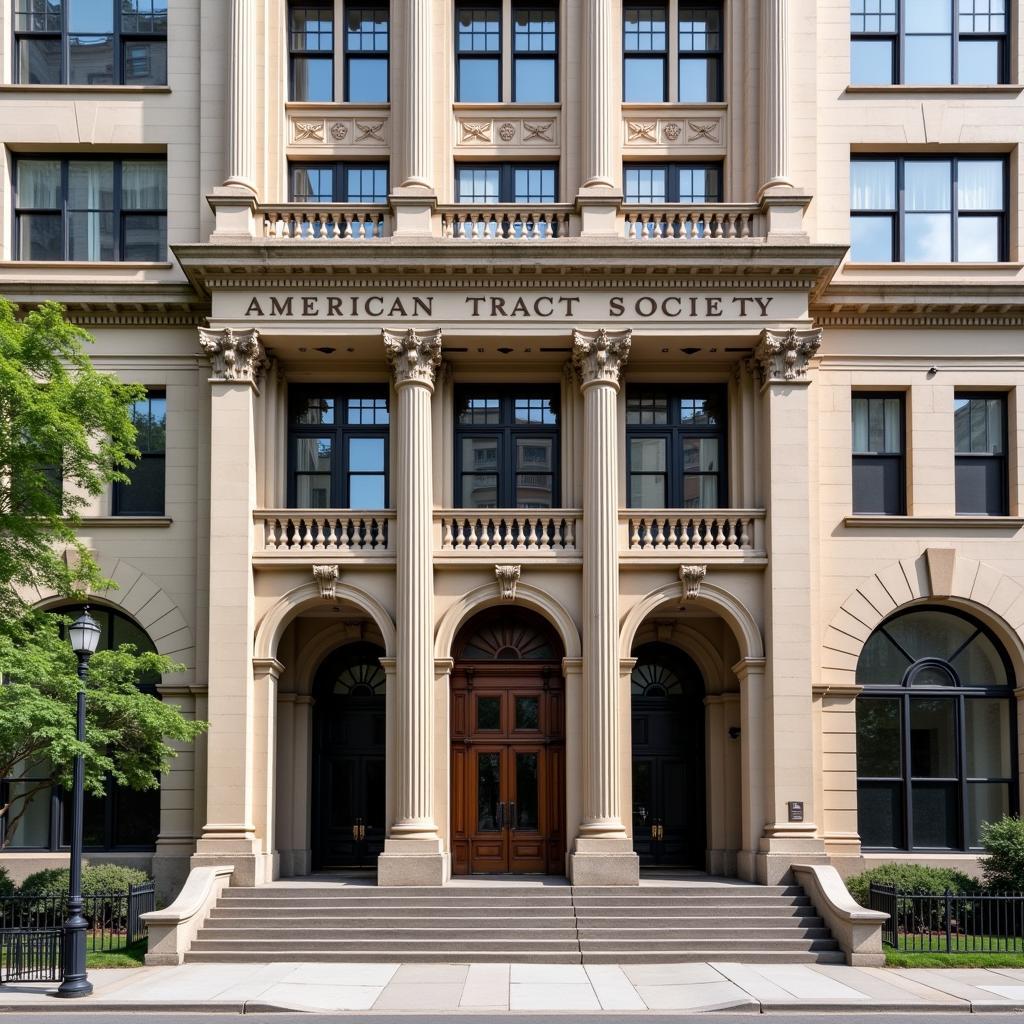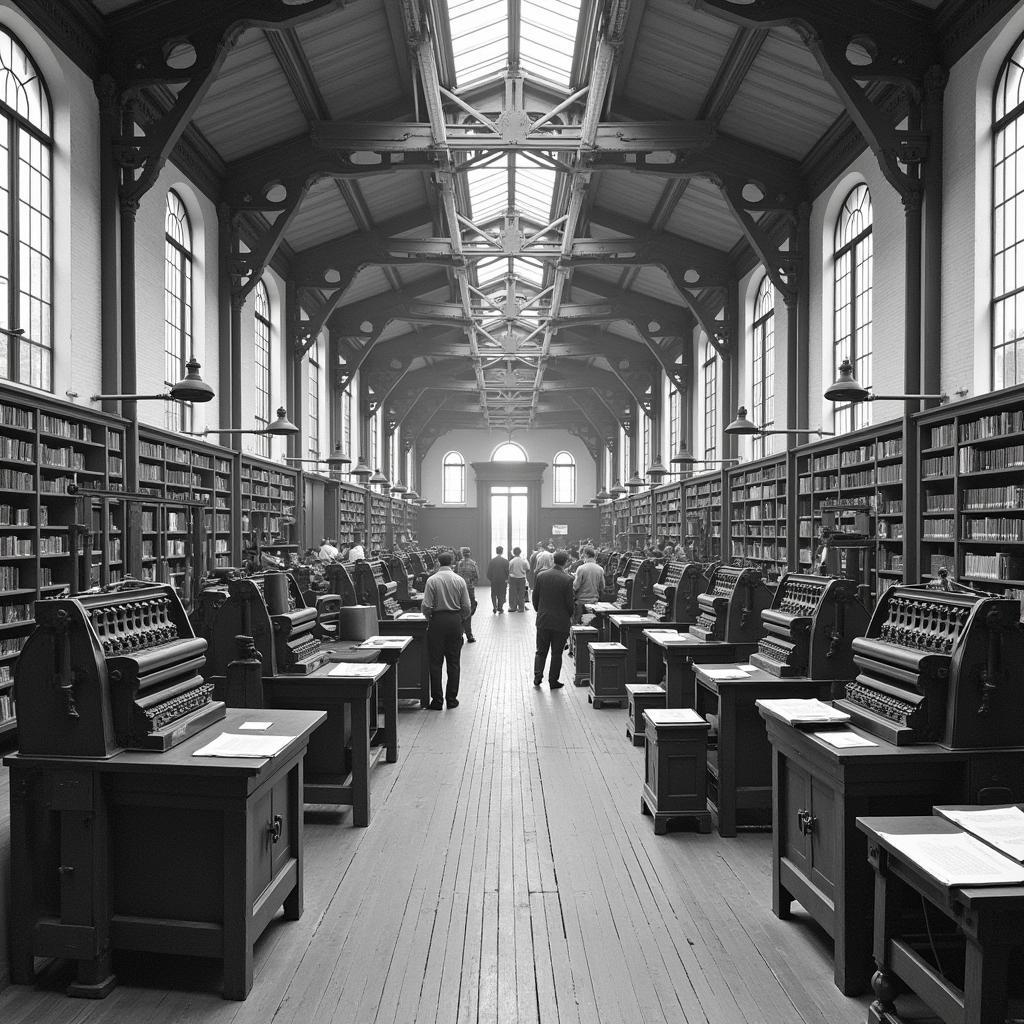The American Tract Society Building, once a prominent landmark in New York City, holds a fascinating history intertwined with the dissemination of religious literature and social reform. This article delves into the building’s past, exploring its significance and impact on American society. Located at the corner of Nassau and Spruce Streets, this building played a crucial role in shaping religious and social discourse in the 19th and 20th centuries. Just after the opening paragraph, we’ll explore some related concepts in organizations working towards social good, such as the Consumer Unity and Trust Society. You can learn more about their initiatives at consumer unity and trust society.
The American Tract Society: A Legacy of Printed Word
Founded in 1825, the American Tract Society aimed to spread Christian values through the mass production and distribution of religious pamphlets, known as tracts. The organization’s rapid growth necessitated a dedicated headquarters, leading to the construction of the American Tract Society Building. This building served as a hub for printing, publishing, and distributing millions of tracts across the nation, influencing religious thought and social movements.
Architectural Significance and Design
The original American Tract Society Building, completed in 1853, was a magnificent example of Italianate architecture. Its impressive facade, featuring intricate details and towering columns, symbolized the Society’s influence and ambition. Later, in 1896, the building was replaced with a 13-story skyscraper, a testament to the organization’s continued growth and the changing urban landscape. This new building, while embracing a more modern style, retained the Society’s commitment to its core mission.
 American Tract Society Building Exterior in New York City
American Tract Society Building Exterior in New York City
What Was the Purpose of the American Tract Society Building?
The building served as the headquarters for the American Tract Society. It housed printing presses, offices, and storage spaces for the millions of tracts they produced. It was the epicenter of their operations, facilitating the dissemination of religious literature throughout the United States and beyond.
The Society’s Impact on Social Reform
Beyond religious teachings, the American Tract Society also played a role in various social reform movements. Their tracts addressed issues like temperance, abolition, and education, reflecting the social concerns of the time. The Society’s efforts contributed to the national dialogue on these critical issues, fostering change and progress.
The Decline and Transformation
With the advent of new media and changing societal values, the American Tract Society’s influence gradually waned in the 20th century. The building was eventually sold, and though its original purpose faded, its architectural legacy persists. Today, the former American Tract Society Building stands as a reminder of a significant period in American religious and social history. The American Real Estate Society provides valuable insights into the dynamics of the real estate market and its historical evolution. You can delve deeper into their research and publications at american real estate society.
How Did the American Tract Society Building Contribute to Social Change?
The Society’s tracts often addressed social issues, advocating for reforms like temperance and the abolition of slavery. By disseminating these messages widely, they influenced public opinion and contributed to the momentum for social change.
 American Tract Society Building Interior
American Tract Society Building Interior
If you’re interested in exploring more about historical buildings and societies in Philadelphia, you might find information about the Society Hill Hotel at Independence Park Philadelphia useful. Check out this link for details: society hill hotel at independence park philadelphia.
Conclusion
The American Tract Society Building stands as a testament to the power of the printed word and its impact on shaping American culture. While the Society itself may have faded into history, the building remains a tangible reminder of its legacy and the role it played in disseminating religious and social ideals throughout the nation. The American Tract Society Building’s history offers valuable insights into the interplay of religion, media, and social reform in the United States.
FAQ
- What year was the American Tract Society founded? 1825
- What was the primary purpose of the American Tract Society? To distribute religious literature.
- What architectural style characterized the original building? Italianate.
- What factors contributed to the Society’s decline? The rise of new media and changing societal values.
- Does the building still exist today? Yes, although it no longer serves its original purpose.
- What social issues did the American Tract Society address? Temperance, abolition, and education.
- Where was the American Tract Society Building located? New York City
 American Tract Society Building Printing Press
American Tract Society Building Printing Press
Interested in learning more about the financial aspects of non-profit organizations? You can explore the compensation structures at various organizations like the American Cancer Society by visiting this link: american cancer society salaries. Similarly, for insights into agricultural societies and their impact on local communities, you can explore the Erie County Agricultural Society: erie county agricultural society.
Common Scenarios and Questions
-
Scenario: Researchers studying 19th-century religious movements. Question: What role did the American Tract Society play in shaping religious discourse during this period?
-
Scenario: Architecture enthusiasts interested in historic buildings. Question: What are the notable architectural features of the American Tract Society Building?
Further Exploration
Consider exploring other articles on our website related to historical societies and their impact on society.
Need Help?
When you need help or more information, please contact us.
Phone Number: 02043854663
Email: [email protected]
Address: Khu 34, Bac Giang, 260000, Viet Nam
Our customer support team is available 24/7.